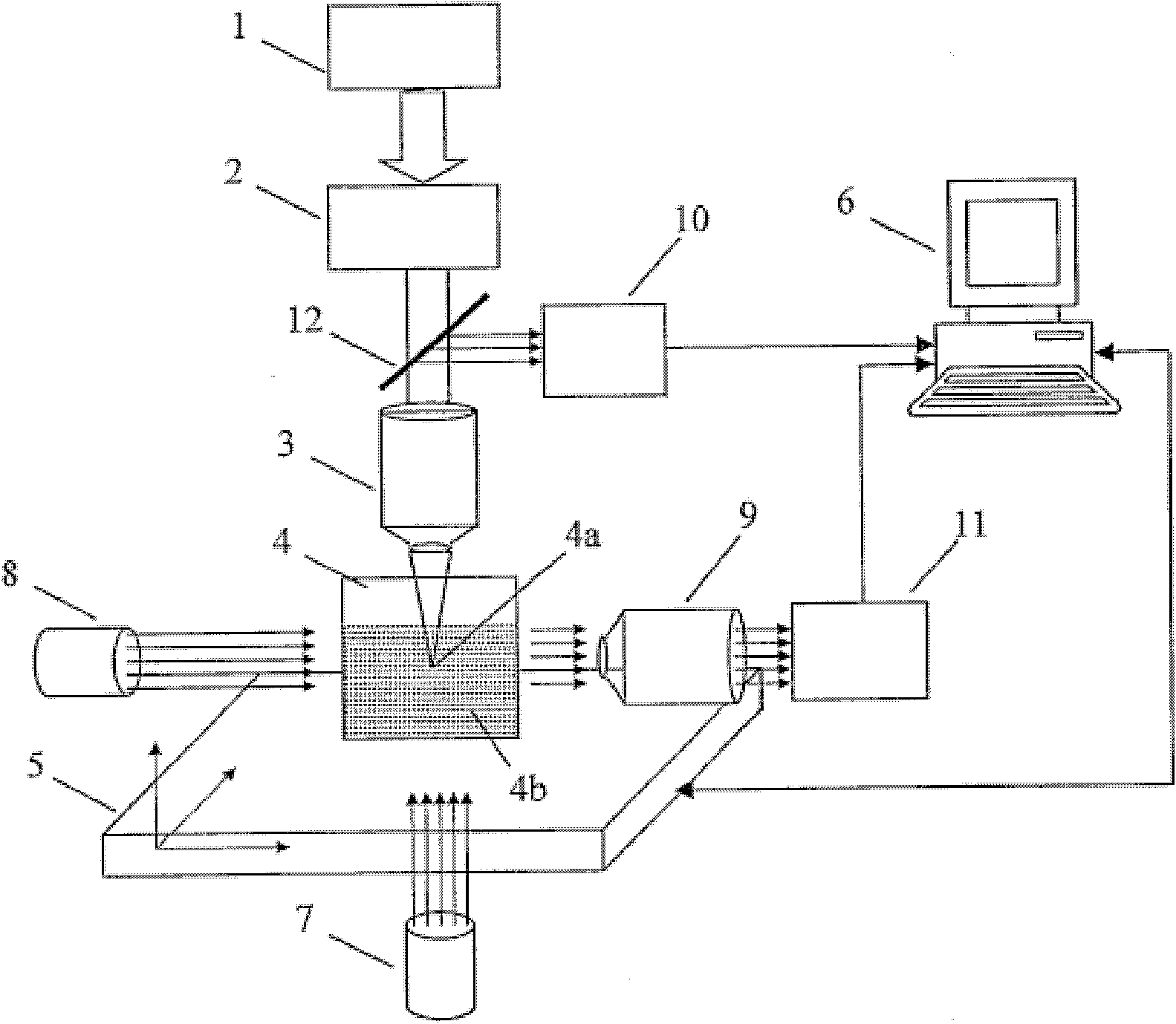Method for creating, trapping and manipulating a gas bubble in liquid
A liquid and micro-bubble technology, applied in the field of optical capture, can solve the problems of surrounding target damage and limited application
- Summary
- Abstract
- Description
- Claims
- Application Information
AI Technical Summary
Problems solved by technology
Method used
Image
Examples
Embodiment 1
[0060] A laser pulse with a width of 200 fs and a wavelength of 800 nm (1, such as figure 1 ) directly through the variable attenuator (2) and focused into distilled water through a dry objective lens with a numerical aperture of 0.55. Controlled by a computer (6), the glass tube (4) filled with water (4b) is moved relative to the focal point (4a) of the objective lens using a three-axis open-frame displacement system (5). The device has two vision systems, one along and one perpendicular to the laser beam. Each vision system has an illumination source (7, 8), an objective lens (3, 9) and a CCD camera (10, 11). Observation along the laser beam is carried out through the same objective lens (NA=0.55, compensation depth 6.3 mm) when the breakdown laser radiation is initiated using the beam splitter (12). The vision system perpendicular to the laser beam uses an objective lens (9) with a numerical aperture of 0.3.
[0061] As mentioned above, after a breakdown in water typical...
Embodiment 2
[0064] A 200 fs laser pulse of a Ti-sapphire laser with a pulse energy of 150 nJ and a repetition rate of 100 kHz was focused into water through an immersion objective lens of 0.75 NA. In this case, stably trapped air bubbles can be observed at any depth of the focal point of the objective lens in water. Trapped air bubbles can be moved in the water by changing the angle of incidence of the laser beam on the focusing objective or by moving the focus in a transverse direction along the beam axis relative to the water container.
Embodiment 3
[0066] The 50 fs laser pulse of the Ti-sapphire oscillator with a pulse energy of 100 nJ and a repetition rate of 5 MHz was focused into water through an immersion objective lens of 0.75 NA. In this case, stably trapped air bubbles can be observed in water at any depth of the focal point of the objective. Trapped air bubbles can be moved in the water by changing the angle of incidence of the laser beam on the focusing objective or by moving the focus in a transverse direction along the beam axis relative to the water container.
PUM
| Property | Measurement | Unit |
|---|---|---|
| diameter | aaaaa | aaaaa |
Abstract
Description
Claims
Application Information
 Login to View More
Login to View More - R&D Engineer
- R&D Manager
- IP Professional
- Industry Leading Data Capabilities
- Powerful AI technology
- Patent DNA Extraction
Browse by: Latest US Patents, China's latest patents, Technical Efficacy Thesaurus, Application Domain, Technology Topic, Popular Technical Reports.
© 2024 PatSnap. All rights reserved.Legal|Privacy policy|Modern Slavery Act Transparency Statement|Sitemap|About US| Contact US: help@patsnap.com










